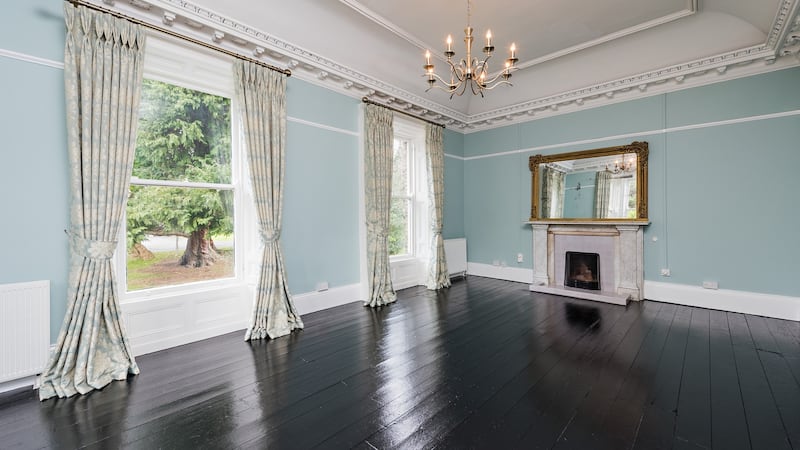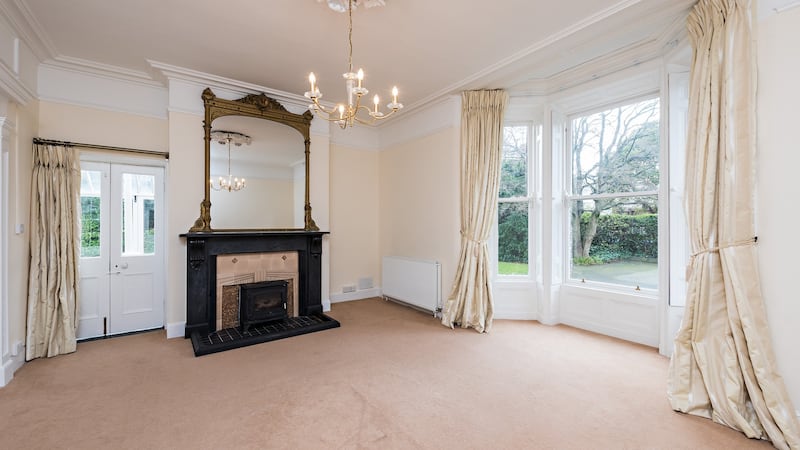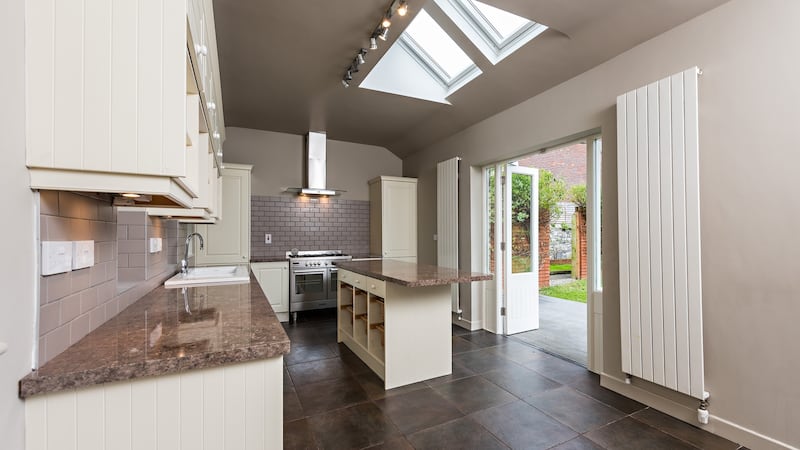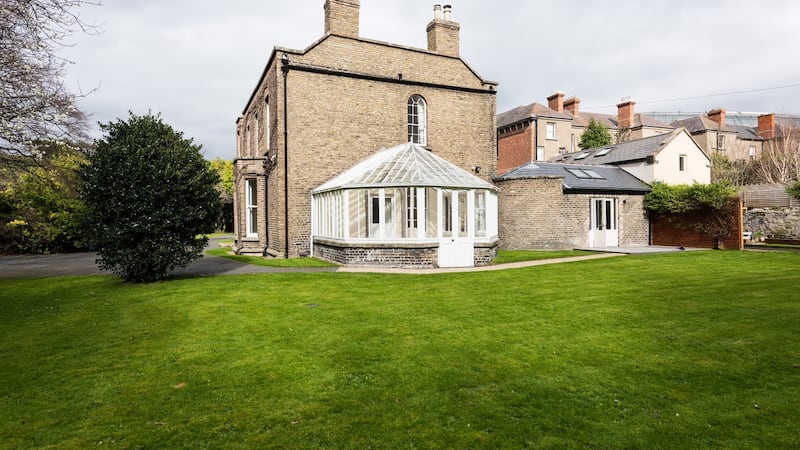Although it takes up an entire corner at one of Ballsbridge’s busier intersections, the thousands of people who daily pass by Lansdowne Lodge almost certainly won’t be aware it’s there – or at least won’t have realised what a grand period house it is.
Glimpses over the tall hedges on the Shelbourne Road side, while idling at the traffic lights, reveal the top storey of a detached house but there is no sign of the beautiful Victorian greenhouse to the side, the coach house at the rear, the lawned gardens, or an inkling that it all sits on 0.6 of an acre in Dublin’s premier real estate location.

Built in 1860 the house still enjoys its original footprint – a rare achievement in an area where slices of gardens have routinely been taken away for development. It has also been able to go about the business of being a family home without drawing attention to itself because it has never come on the open market.
In the 1890s Thomas Robert Baillie-Gage, arriving from Derry to take up his new job as solicitor to the Post Office, rented Lansdowne Lodge. He then bought it from his landlord and the 361sq m (3,891sq ft) house (including coach house) has remained in the family since.

In 2012 the four adult siblings who grew up here and had recently inherited it had a choice to make – keep or sell – and they decided to rent it but only after a comprehensive renovation that included a new roof and heating system. They decorated throughout and put in a new kitchen, bathroom and an en suite to one of the bedrooms.
The four-year rental explains the sales photos which show empty rooms. At the top of the market it is more usual for such houses to be “staged” by an interior decorator who typically arrives with multiple throw cushions and grey sofas but not here – as Barry Connolly from Savills suggests, “this house sells itself”.

Outer hall
The charming tree-lined winding driveway is off Lansdowne Road and so the first sight of the house is a sideways presentation: a tall gable wall with four sash windows. Around the front, facing Shelbourne Road, the wide hall door is flanked by deep bay windows. Inside the outer hall, a square room with three interior doors and a fireplace, was originally the perfect place to receive visitors. The door to the left opens into the house’s grandest room, running its full depth, with two sash windows in the side wall and the bay to the front. To the right is a parlour room leading into the greenhouse, and via double doors, to a small dining room to the rear.
To the back of the house the grand inner hall features an elegant staircase with light pouring in from one of the many round-head sash windows, and upstairs there are five bedrooms, three good-sized rooms and two very small ones. As two of the bedrooms interconnect, new owners will probably use one as a dressing room.

Downstairs a corridor at the rear leads to the modernised kitchen which is in an attractive curved-walled room that opens out to the garden. Back here also is the usual assortment of service rooms and a charming inner courtyard which is a surprise find.
One of most appealing things about Lansdowne Lodge is that is hasn’t had a 1970s or, worse, 2000s makeover. The family did very little to it – there aren’t any jarring extensions or interventions – so it has an authentic period house feel, helped by its many original interior features. They did convert the coach house into guest accommodation – it has separate pedestrian access from Shelbourne Road – so new owners might treat it as a separate property.

Astonishingly Lansdowne Lodge, one of the oldest houses in the neighbourhood and probably one of the most intact ones, is not a protected structure. Encouraged by that and the sight of the Lansdowne Place super-luxury apartment block under construction just across the road, the agents suggests it might be a “development opportunity” along the lines of its blingy burgeoning neighbour. Which would be a pity.
Lansdowne Lodge is for sale through Savills for €4.5 million.











